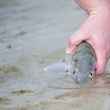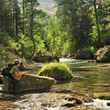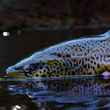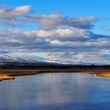For most Americans fish don’t count as wildlife. They’re slimy, cold, featherless, furless, silent and, save for anglers, generally unseen. In my last Hatch Magazine article, “A Plague on All Your Trout,” I quoted Wilderness Watch, which passionately defends icons of wilderness like grizzlies and wolves but dismisses icons of wilderness like Gila trout. I don’t mean to pick on this group because it does some good in its own way. But its condemnation of Gila trout recovery, mandated by the Endangered Species Act, provides the best example I’ve seen of how much of the public and environmental community perceive fish: “It is both sad and ironic that it was Aldo Leopold who convinced the Forest Service to protect the Gila [National Forest] as our nation's first wilderness in the 1930s — now, it is in danger of being converted to a fish farm for recreationists.”
I wasn’t lusting for 7-inch trout in 1994 when I flew from Boston to Albuquerque, trekked into the Gila Wilderness and waded up Black Canyon Creek. This recreationist didn’t even tote a rod.





























